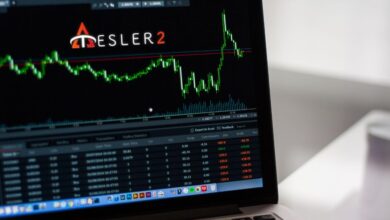What is Churning in Finances?

If you are in the practice of trading often through any online platform, then you must have an idea about the strategy of churning employed by the platform’s finance brokers. The brokers of the online trading platform often conduct excessive trades to generate commissions for themselves. The practice of churning is illegal and unethical according to the provisions of the SEC and securities law. Even though there is no hard and fast definition of churning, it can be considered as the frequent purchasing and selling of securities and assets in a way that does not meet the investment goals of the client. If you feel trapped by your broker’s churning practices, then read on to find out more details about it right here.
What is churning?
Churning is an unethical practice in which the broker often conducts over-trading through the account of the client to add a fat load of commission to his bank account. The practice is also adopted by portfolio managers who conduct excessive trading through the hedge funds, mutual funds, and securities of the clients to make profits underhandedly.
Types of Churning
One basic form of churning is when brokers generate commission by trading uncontrollably through the customer’s account. These brokers often justify the financial benefits of the commissionable trades to the client and then proceed to place the trades with the amount invested by the client through the client’s account. If there is excessive commission without any noticeable profits in the account portfolio, then it is indicative of the fact that the client has become a victim of churning.
The practice of churning may also be applicable in cases of unrestrained trading done with the annuities, securities, and funds of the client by the fund managers handling the client’s account. The funds that have an upfront load are usually long-term investments. With mutual funds, the selling of an A-share fund within a few years and then buying of another A-share fund has to be driven by prudent decisions of investment. Most of the financial institutions permit the investors to switch between funds of any fund family without having to pay any upfront charges. However, a broker should take the fund family into account while recommending a change in investment. When the switching of funds and securities happens excessively, that is when churning happens.
Stock investors may need to watch out as there are several different types of churning practices. One of the popular forms of churning is done by brokers who conduct excessive trading in bonds and stocks. Churning is also practiced by the unwarranted buying and selling of life insurance policies, annuities, and mutual funds. It is to be noted that churning out of life insurance policies has a term of its own, and that is twisting. Churning comes with its own set of warning signs. The investor has to monitor his account very closely and identify the pattern and trends of buying and selling of funds to identify and block the illegal practice.
How to Identify Churning?
An investor who works with an investment broker has to be alert and diligent irrespective of the trustworthiness and reputation of the broker. The finance industry is abundant with predatory brokers. The broker may take control of the client’s account and conduct excessive trading with little or no benefit to the client. The most important thing to do is to be thorough with every document regarding the performance of the account provided by the broker. The federal laws make it mandatory for the broker to furnish the client with documents of every transaction. The broker may not provide such documents frequently despite you being a passive trader. Identify such a sign as a warning of churning.
If the annuities and funds get switched too frequently for different mutual funds and annuities, then consider that to be a sign of churning. The broker makes such switching moves to maximize the commission.
If you notice a deterioration of finance of your account in spite of the bullish shift in the finance market, then probe deeper to find out if the broker is churning. The decline in the client’s account could be due to the generation of excessive commissions from unrestricted trades.
A few important FAQs
- What does churning mean in business?
- Churning is a form of misconduct on the part of the broker. The broker conducts excessive trades through the account of the investor without the investor’s consent to generate more commissions.
- What is an example of churning?
- A classic example of churning is when a broker takes over the mutual fund of an investor and conducts excessive transactions to secure personal commissions without adding any benefit to the mutual fund investment.
- What is portfolio churning?
- Portfolio churning is the illegal practice of conducting excessive transactions with the client’s investment amount for the generation of commissions. Brokers and portfolio managers resort to this unethical finance practice to generate hefty commissions for themselves.
Conclusion
Churning finance is illegal, and if you feel that your broker is misusing your investment funds, then you may get in touch with your financial attorney right away. If you notice the warning signs, then do not waste any more time but file a suit at the arbitration court right away.If you win the case, you may be able to win back the commissions obtained by the broker and the losses incurred by you during the churning session. Churning is illegal, and the broker is imposed with severe fines and penalties for such unfair practices.









